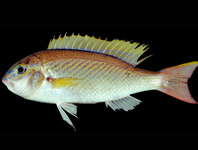Abstract
Phlebotomine sand flies are insects of medical importance, as they are vectors of viruses, bacteria and trypanosomatids of the genus Leishmania Ross, the causative agent of leishmaniasis (Forattini 1973). During the past 20 years approximately 500,000 cases of leishmaniasis have been reported in Brazil. Most of these cases were reported in the North and Northeast regions. In the State of Roraima, almost 2,000 cases, including both cutaneous leishmaniasis (CL) and visceral leishmaniasis (VL), have been reported during the past three years (SINAN 2017). Usually the transmission by infected female sand flies occurs in wild or rural areas, but there have also been recorded cases and vector captures in urban environments. Some sand fly species are known to enter houses in search of resting places and blood meal sources; as a result of this behavior, they are remarkably adaptable to new environments (Carvalhoet al. 2010).
References
Arias, J.R. & Naiff, R.D. (1981) The opossum, Didelphis marsupialis (Marsupialia: Didelphidae), as a reservoir host of Leishmania braziliensis guyanensis in the Amazon Basin of Brazil. Transactions of the Royal Society of Tropical Medicine and Hygien, 75, 537–541.
https://doi.org/10.1016/0035-9203(81)90194-2Carvalho, G.M., Gontijo, C.M., Falcão, A.L. & Andrade Filho, J.D. (2010) Study of phlebotomine sand flies (Diptera: Psychodidae) collected in a Leishmania-endemic area of the metropolitan region of Belo Horizonte, Brazil. Journal of Medical Entomology, 47, 972–976.
https://doi.org/10.1603/ME09127Forattini, O.P. (1973) Entomologia médica. Psychodidae, Phlebotominae, Leishmaniose, Bartonelose. Vol. IV. Edgard Blucher, São Paulo, 658 pp.
Galati, E.A.B. (2017) Bioecologia e identificação de Phlebotominae. Available from: http://www.fsp.usp.br/egalati/wp-content/uploads/2018/07/Nova-Apostila-Vol-I_2018.pdf (accessed 16 March 2017)
Killick-Kendrick, R. (1990) Phlebotomine vectors of the leishmaniases: a review. Medical and Veterinary Entomology, 4, l–24.
https://doi.org/10.1111/j.1365-2915.1990.tb00255.xLainson, R., Shaw, J.J., Silveira, F.T., Souza, A.A.A., Braga, R.R. & Ishikawa, E.A.Y. (1994) The dermal leishmaniases of Brazil, with special reference to the eco-epidemiology of the disease in Amazonia. Memórias do Instituto Oswaldo Cruz, 89, 435–443.
https://doi.org/10.1590/S0074-02761994000300027Lainson, R., Ward, R.D. & Shaw, J.J. (1976) Cutaneous leishmaniasis in North Brazil: Lutzomyia anduzei as a major vector. Transactions of the Royal Society of Tropical Medicine and Hygien, 70, 171–172.
https://doi.org/10.1016/0035-9203(76)90202-9Martins, Α.V., Falcão, A.L. & Silva, J.E. (1963) Notas sobre os flebótomos do
Território de Roraima, com a descrição de três novas espécies (Diptera: Psychodidae). Revista Brasileira de Biologia, 23, 333–348.
Ramos, W.R., Medeiros, J.F., Julião, G.R., Ríos-Velásquez, C.M., Marialva, E.F., Desmouliére, S.J.M., Luz, S.L. & Pessoa, F.A. (2014) Anthropic effects on sand fly (Diptera: Psychodidae) abundance and diversity in an Amazonian rural settlement, Brazil. Acta Tropica, 139, 44–52.
https://doi.org/10.1016/j.actatropica.2014.06.017Rangel, E.F. & Lainson, R. (2009) Proven and putative vectores of American cutaneous leishmaniasis in Brazil: aspects of their biology and vectorial competence. Memórias do Instituto Oswaldo Cruz, 104, 937–954.
https://doi.org/10.1590/S0074-02762009000700001Romero, G.A.S., Guerra, M.V.F., Paes, M.G. & Macêdo, V.O. (2002) Comparison of Cutaneous Leishmaniasis due to Leishmania (Viannia) braziliensis and L (V.) guyanensis in Brazil: clinical findings and diagnostic approach. Clinical Infectious Diseases, 32, 1304–1312.
https://doi.org/10.1086/319990Ryan, L., Lainson, R. & Shaw, J.J. (1987) Leishmaniasis in Brazil XXIV. Natural flagellate infections of sandfly (Diptera: Psychodidae) in Pará State, with particular reference to the role of Psychodopygus wellcomei as the vector of Leishmania (Leishmania) brasiliensis in the Serra dos Carajás. Transactions of the Royal Society of Tropical Medicine and Hygiene, 81, 353–359.
https://doi.org/10.1016/0035-9203(87)90133-7SINAN/NSIS/DVE/CGVS/SESAU-RR (2017) Sistema de informações de agravos de notificação/ Secretaria de Vigilância em saúde/ Ministério da Saúde. Available from: http://www.saude.rr.gov.br. (accessed 16 March 2017)
Shimabukuro, P.H.F., Andrade, A.J., Galati, E.A.B., Cordeiro, D.P. & Bravo, F. (2017) Catálogo Taxonômico da Fauna Brasileira. Available from: http://fauna.jbrj.gov.br/fauna/listaBrasil/PrincipalUC/PrincipalUC.do?lingua=pt (accessed 16 March 2017)
Silveira, F.T., Souza, A.A., Lainson, R., Shaw, J.J., Braga, R.R. & Ishikawa, E.E.A. (1991) Cutaneous leishmaniasis in the amazon region: Natural infection of the sandfly Lutzomyia ubiquitalis (Psychodidae: Phlebotominae) by Leishmania (Viannia) lainson in Pará State, Brazil. Memórias do Instituto Oswaldo Cruz, 88,127–130.
https://doi.org/10.1590/S0074-02761991000100021Souza, A.A.A., Silveira, F.T., Lainson, R., Barata, I.R., Silva, M.G.S., Lima, J.A.N., Pinheiro, M.S.B., Silva, F.M.M., Vasconcelos, L.S., Campos, M.B. & Ishikawa, E.A.Y. (2010) Fauna flebotomínica da Serra dos Carajás, Estado do Pará, Brasil, e sua possível implicação na transmissão da leishmaniose tegumentar americana. Revista Pan-Amazônica de Saude, 1, 45–51.
Vilela, M.L., Pita-Pereira, D., Azevedo, C.G., Godoy, R.E., Britto, C. & Rangel, E.F. (2013) The phlebotomine fauna (Diptera: Psychodidae) of Guaraí, state of Tocantins, with an emphasis on the putative vectors of American cutaneous leishmaniasis in rural settlement and periurban areas. Memórias do Instituto Oswaldo Cruz, 108, 578–585.
https://doi.org/10.1590/S0074-02762013000500007Young, D.G. & Duncan, M.A. (1994) Guide to the identification and geographic distribution of Lutzomyia sand flies in México, the West Indies, Central and South America (Diptera: Psychodidae). Memoirs of the American Entomological Institute, Florida, 881 pp.

